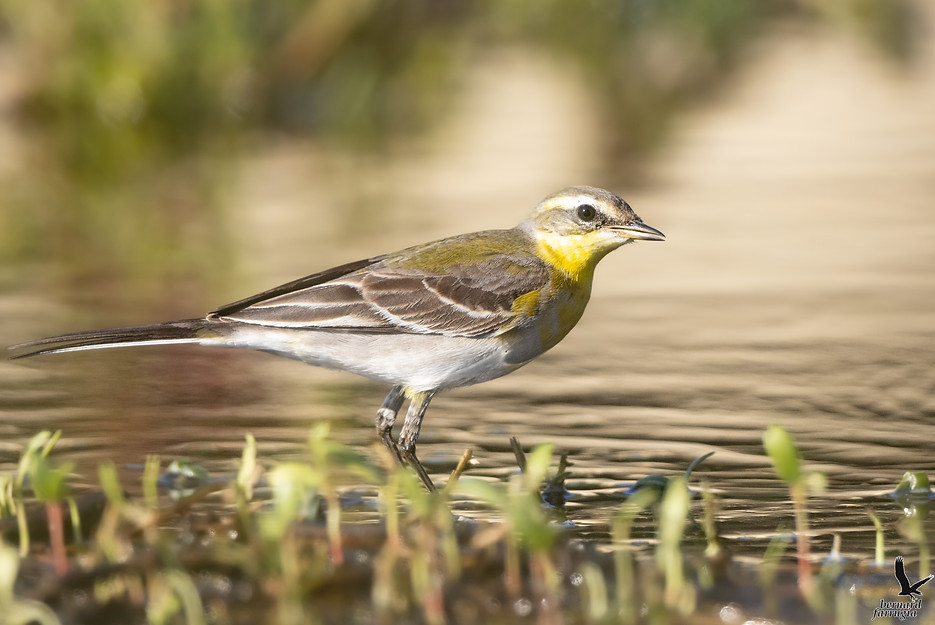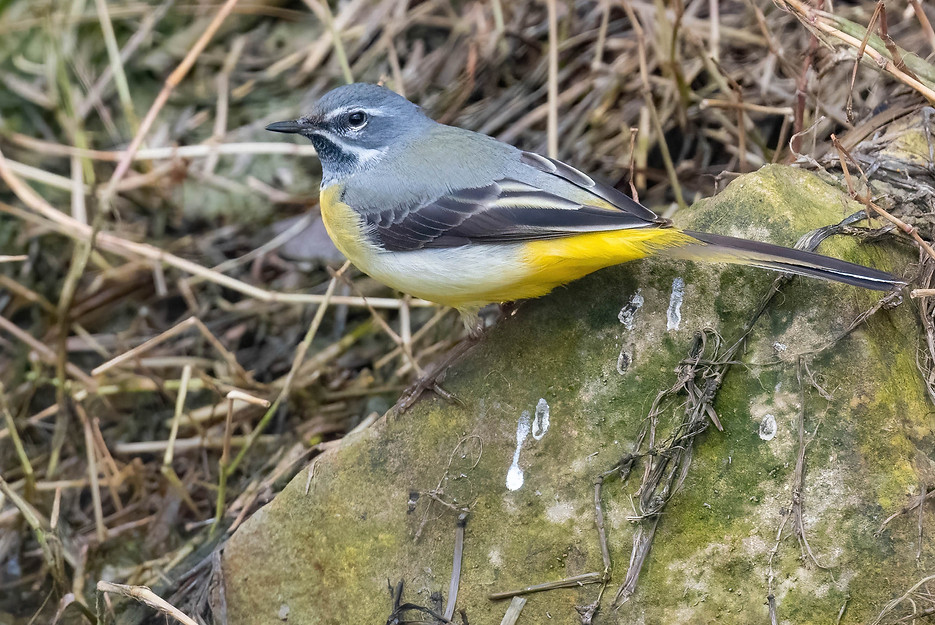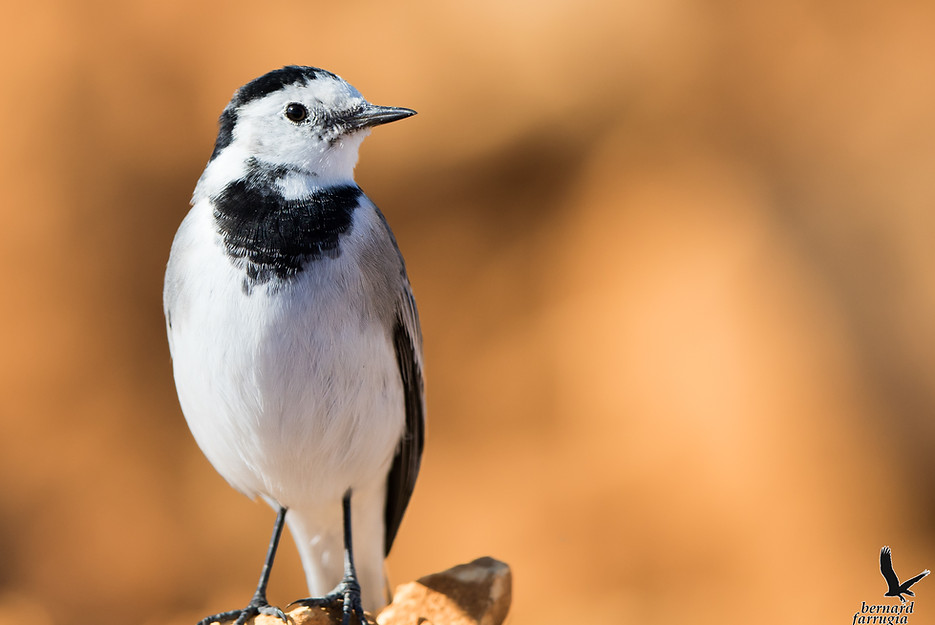top of page

Wagtails
Yellow wagtail
Western Yellow Wagtail
Maltese name/s
Scientific binomen
Order
Family
Sighting occurrence
Info*
Seen individually, in groups or in larger flocks.
Head is mainly greenish with a yellow face, throat, breast and belly. Also a yellow supercilium in males. Females are paler with a greyish head paler supercilium and paler throats.
Tail quite short compared to other wagtails, and the whole bird in profile is like a pipit. Hybrids are not uncommon. Differs from Grey Wagtail in dark legs, only pale yellow vent and narrow wing-bars. Juvenile White Wagtails and Yellow Wagtails can be confused, but White Wagtail is greyer, with big grey breast patch (Yellow Wagtail may show narrow breast band). Closest congener is Citrine Wagtail, which lacks dark lore, has broad wing-bars and grey back.
Diet
Insects and spiders, particularly flying insects in sparse vegetation and open ground.
Longevity record
8 years 10 months (Found dead in Sweden, 2407355)
Isfar
Motacilla flava
Passeriformes
Motacillidae
Fairly common
Usually seen in
March - May, August - November
Occasionally seen in
all other months
Click on the image to open slideshow


ssp. Motacilla flava


1/32
Length (cm):
Weight (g):
15 - 16
15 - 23

Eastern yellow wagtil
Eastern Yellow Wagtail
Maltese name/s
Scientific binomen
Order
Family
Sighting occurrence
Info*
A vagrant seen twice in December, at (i) Salini salt pans in 2019 and (ii) M'Xlokk in 2022.
It is very similar to a Blue-headed Wagtail (M.flava) i.e. a blueish/grey head with but it has a slightly paler grey forehead to nape, and mostly pale grey ear-coverts (sometimes blackish), blackish-grey lores and conspicuous white eyebrow. Crown and nape are bluish-grey.
Call is very distinctive and different from its Western Yellow Wagtails species.
Diet
Insects and spiders, particularly flying insects in sparse vegetation and open ground.
Longevity record
-
Usually seen in
-
Occasionally seen in
December
Click on the image to open slideshow

14-03-20



14-03-20
1/12
Length (cm):
Weight (g):
15 - 16
15 - 23

Citrine Wagtail
Citrine Wagtail
Maltese name/s
Scientific binomen
Order
Family
Sighting occurrence
Info*
Seen individually.
Adult male easily recognized with all yellow head with dark edges and grey back. Prominent white wing-bars and all dark bill, lacking the pale base of Yellow Wagtail. Females and adult winter lacks the dark lore-stripe of Yellow Wagtail, and the flanks are grey. The same applies to the juveniles. These also give a very grey impression, almost resembling a Pied Wagtail without the dark breast-pattern. Juvenile Yellow Wagtails have a less grey and more olive tone to their backs. The dark facial markings/ear coverts of females/winter/juveniles birds are usually framed by the continuation of the strong supercilium. Some Yellow Wagtails are very similar to Citrine, and call and tail length should be considered as well (tail longer in Citrine).
Diet
Insects and spiders, particularly flying insects in sparse vegetation and open ground.
Longevity record
-
Zakak Rasu Safra
Motacilla citreola
Passeriformes
Motacillidae
Rare
Usually seen in
-
Occasionally seen in
August, September, November
Click on the image to open slideshow




1/6
Length (cm):
Weight (g):
15.5 - 17
15 - 24

Grey Wagtail
Grey Wagtail
Maltese name/s
Scientific binomen
Order
Family
Sighting occurrence
Info*
Seen individually.
Elegant and very long-tailed wagtail. Vent always bright yellow in all plumages. Legs pinkish flesh-coloured, not black as in Yellow Wagtails species. Wings with single white bar, visible both from below and above. Male with black throat in summer. Constantly wags tail, often in a more horizontal posture than congeners. Flight more attenuated and more bounding than in other wagtails. Attached to water and streams.
Diet
Insects and spiders, particularly flying insects in sparse vegetation, open ground and especially near water ponds and streams.
Longevity record
8 years 0 months (Germany, BO 87112)
Zakak tad-Dell
Motacilla cinerea
Passeriformes
Motacillidae
Scarce
Usually seen in
March - April, September - October
Occasionally seen in
February, May, August, November
Click on the image to open slideshow




1/9
Length (cm):
Weight (g):
17 - 20
17 - 23

White Wagtail
White Wagtail
Maltese name/s
Scientific binomen
Order
Family
Sighting occurrence
Info*
Seen individually, in small groups or larger flocks.
Grey and white wagtail with prominent black markings on head and breast.
Different from the Pied Wagtail found within the British Isles which is now considered as a full species M. yarreli, that has a black back, whilst it is grey in the White Wagtail.
Only faint black markings on head in juveniles and in winter plumage, but always shows big dark breast patch. Unmistakable in breeding plumage. Pale individuals of Yellow Wagtail and Citrine Wagtail, differs in lacking large breast patch, and in contact call.
Diet
Insects and spiders, particularly flying insects in sparse vegetation, open ground and especially near water ponds and streams.
Longevity record
13 years 8 months (Czech Republic, N 212046)
Zakak Abjad
Motacilla alba
Passeriformes
Motacillidae
Fairly common
Usually seen in
October - February
Occasionally seen in
all other months
Click on the image to open slideshow


Leucistic White Wagtail


1/8
Length (cm):
Weight (g):
16.5 - 19
18 - 23

*Some information was sourced from ''BirdID Nord University''.
bottom of page
